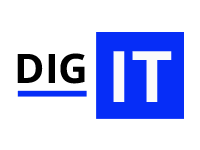Trusted By Companies Worldwide & 32,052+ Learners













Duration
30 Hrs
Live Projects
2
Next Batch
Monday
Python Course Overview
Python training from US IT Skills is an ideal way to get an exposure to various features of Python programming, advanced Python programming, Python for test automation, Python scripting, Python for Data Analysis and Big Data. Our curriculum is wholly based on real-time scenarios based on Python implemented in today’s world.
1200+ Students
Python Course Curriculum
- What is Script, program?
- Types of Scripts
- Difference between Script and Programming Languages
- Features and Limitation of Scripting
- Types of Programming Language Paradigms
- What is Python?
- Why Python?
- Who Uses Python?
- Characteristics of Python
- History of Python
- What is PSF?
- Python Versions
- How to Download and Install Python
- Install Python with Diff IDEs
- Features and Limitations of Python
- Python Applications
- Creating Your First Python Program
- Printing to the Screen
- Reading Keyboard Input
- Using Command Prompt and GUI or IDE
- Python Distributions
- Execute the Script
- Interactive and Script Mode
- Python File Extensions
- SETTING PATH IN Windows
- Clear screen inside python
- Learn Python Main Function
- Python Comments
- Quit the Python Shell
- Shell as a Simple Calculator
- Order of operations
- Multiline Statements
- Quotations in Python
- Python Path Testing
- Joining two lines
- Python Implementation Alternatives
- Sub Packages in Python
- Uses of Python in Data Science, IoT
- Working with Python in Unix/Linux/Windows/Mac/Android
- PyCharm IDE
- How to Work on PyCharm
- PyCharm Components
- Debugging process in PyCharm
- PYTHON Install Anaconda
- What is Anaconda?
- Coding Environments
- Spyder Components
- General Spyder Features
- Spyder Shortcut Keys
- Jupyter Notebook
- What is Conda? and Conda List?
- Jupyter and Kernels
- What is PIP?
- What is a Variable?
- Variables and Constants in Python
- Variable, Variable names and Value
- Mnemonic Variable Names
- Values and Types
- What Does “Type” Mean?
- Multiple Assignment
- Python different numerical types
- Standard Data Types
- Operators and Operands
- Order of Operations
- Swap variables
- Python Mathematics
- Type Conversion
- Mutable Versus Immutable Objects
- What is string?
- String operations and indices
- Basic String Operations
- String Functions, Methods
- Delete a string
- String Multiplication and concatenation
- Python Keywords, Identifiers and Literals
- String Formatting Operator
- Structuring with an indentation in Python
- Built-in String Methods
- Define Data Structure?
- Data Structures in PYTHON
- Arithmetic, Relational Operators and Comparison Operators
- Python Assignment Operators
- Shorthand Assignment Operators
- Logical Operators or Bitwise Operators
- Membership Operators
- Identity Operators
- Operator precedence
- Evaluating Expressions
- How to use “if condition” in conditional structures
- if statement (One-Way Decisions)
- if .. else statement (Two-way Decisions)
- How to use “else condition”
- if .. elif .. else statement (Multi-way)
- When “else condition” does not work
- How to use “elif” condition
- How to execute conditional statement with minimal code
- Nested IF Statement
- How to use “While Loop” and “For Loop”
- How to use For Loop for set of other things besides numbers
- Break statements, Continue statement, Enumerate function for For Loop
- Practical Example
- How to use for loop to repeat the same statement over and again
- Break, continue statements
- Accessing Values in Strings
- Various String Operators
- Some more examples
- Python String replace() Method
- Changing upper and lower case strings
- Using “join” function for the string
- Reversing String
- Split Strings
- Strings
- Unicode Strings
- Lists
- Tuples
- buffers
- xrange
- Lists are mutable
- Getting to Lists
- List indices
- Traversing a list
- List operations, slices and methods
- Map, filter and reduce
- Deleting elements
- Lists and strings
- Advantages of Tuple over List
- Packing and Unpacking
- Comparing tuples
- Creating nested tuple
- Using tuples as keys in dictionaries
- Deleting Tuples
- Slicing of Tuple
- Tuple Membership Test
- Built-in functions with Tuple
- Dotted Charts
- How to create a set?
- Iteration Over Sets
- Python Set Methods
- Python Set Operations
- Union of sets
- Built-in Functions with Set
- Python Frozenset
- How to create a dictionary?
- PYTHON HASHING?
- Python Dictionary Methods
- Copying dictionary
- Updating Dictionary
- Delete Keys from the dictionary
- Dictionary items() Method
- Sorting the Dictionary
- Python Dictionary in-built Functions
- Dictionary len() Method
- Variable Types
- Python List cmp() Method
- Dictionary Str(dict)
- What is a function?
- How to define and call a function in Python
- Types of Functions
- Significance of Indentation (Space) in Python
- How Function Return Value?
- Types of Arguments in Functions
- Default Arguments and Non-Default Arguments
- Keyword Argument and Non-keyword Arguments
- Arbitrary Arguments
- Rules to define a function in Python
- Various Forms of Function Arguments
- Scope and Lifetime of variables
- Nested Functions
- Call By Value, Call by Reference
- Anonymous Functions/Lambda functions
- Passing functions to function
- map(), filter(), reduce() functions
- What is a Docstring?
- What is a Module?
- Types of Modules
- The import Statement
- The from…import Statement
- ..import * Statement
- Underscores in Python
- The dir( ) Function
- Creating User defined Modules
- Command line Arguments
- Python Module Search Path
- What is a Package?
- Introduction to Packages?
- py file
- Importing module from a package
- Creating a Package
- Creating Sub Package
- Importing from Sub-Packages
- Popular Python Packages
- How to Use Date & DateTime Class
- How to Format Time Output
- How to use Timedelta Objects
- Calendar in Python
- DateTime classes in Python
- How to Format Time Output?
- The Time Module
- Python Calendar Module
- Python Text Calendar, HTML Calendar Class
- Unix Date and Time Commands
- What is a data, Information File?
- File Objects
- File Different Modes and Object Attributes
- How to create a Text File and Append Data to a File and Read a File
- Closing a file
- Read, read line ,read lines, write, write lines…!!
- Renaming and Deleting Files
- Directories in Python
- Working with CSV files and CSV Module
- Handling IO Exceptions
- Shell Script Commands
- Various OS operations in Python
- Python File System Shell Methods
- Python Errors
- Common RunTime Errors in PYTHON
- Abnormal termination
- Chain of importance Of Exception
- Exception Handling
- Try … Except
- Try .. Except .. else
- Try … finally
- Argument of an Exception
- Python Custom Exceptions
- Ignore Errors
- Assertions
- UsingAssertionsEffectively
Python Iterators, Generators, Closures, Decorators and Python @property
- Introduction to OOPs Programming
- Object-Oriented Programming System
- OOPS Principles
- Define Classes
- Creating Objects
- Class variables and Instance Variables Constructors
- Basic concept of Object and Classes
- Access Modifiers
- How to define Python classes
- Python Namespace
- Self-variable in python
- Garbage Collection
- What is Inheritance? Types of Inheritance?
- How Inheritance works?
- Python Multiple Inheritance
- Overloading and Overriding
- Polymorphism
- Abstraction
- Encapsulation
- Built-In Class Attributes
- What is Regular Expression?
- Regular Expression Syntax
- Understanding Regular Expressions
- Regular Expression Patterns
- Literal characters
- Repetition Cases
- Example of w+ and ^ Expression
- Example of \\s expression in re.split function
- Using regular expression methods
- Using re.match()
- Finding Pattern in Text (re.search())
- Using re.findall for text
- Python Flags
- Methods of Regular Expressions
- What is XML?
- Difference between XML and HTML and XML, JSON, Gson
- How to Parse XML and Create XML Node
- Python vs JAVA
- XML and HTML
- What is Database? Types of Databases?
- What is DBMS?, RDBMS?
- What is Big Data? Types of data?
- Oracle
- MySQL
- SQL server
- DB2
- Postgresql
- Executing the Queries
- Bind Variables
- Installing of Oracle Python Modules
- Executing DML Operations..!!
- What is Multithreading
- Threading Module
- Defining a Thread
- Thread Synchronization
- The components of a web page
- BeautifulSoup
- Urllib2
- HTML,CSS,JS,jQuery
- Data frames
- PIP
- Installing External Modules Using PIP
- What is Testing?
- Types of Testings and Methods?
- What is Unit Testing?
- What is PyUnit?
- Test scenarios, Test Cases, Test suites
- Django – Design
- Advantages of Django
- MVC and MVT
- Installing Django
- Designing Web Pages
- HTML5, CSS3, AngularJS
- PYTHON Flask, Bottle, Pyramid, Falcon
- Introduction
- Components and Events
- Adding Controls
- Entry Widget, Text Widget, Radio Button, Check Button
- List Boxes, Menus, ComboBox
OUR MILESTONES
Students
Certifications
Trainers
Clients
Course Curriculum Objectives
- By the end of our Python Course,
- You will acquire an in-depth subject knowledge and skills to implement basic and advanced Python concepts.
- You will gain knowledge in advanced analytics and data visualization topics.
- You will be trained in developing algorithms and building of real-life applications.
- You will be a position to handle industry-based real-time projects on Python.
- There has been significant growth for Python-based jobs across various industries over the years.
- Many Multinational companies are now hiring certified Python programmers.
- The average salary for Python professional is about $103,492 per annum.
- Software developers.
- JAVA programmers.
- Testers.
- Networking professionals.
- Aspirants were willing to build their career in Python related fields.
Basic understanding of computer programming terminologies and concepts related to programming and database are required, but not mandatory. The following job roles will get benefited by taking up this course:
Big Data professionals.
Data scientists
Software engineers
The tutor will take care of handling the projects. We will provide two real-time projects with a highly-skilled guide who can assist you throughout the project.
offered training modes
SELF-PACED E-LEARNING
Lorem ipsum dolor sit amet, consectetur adipiscing elit, sed do eiusmod.
LIVE ONLINE TRAINING
Using Lottie animation in your website headings will not compromise loading speed.
CORPORATE TRAINING
Your website visitors will quickly notice your Lottie animation headings.
Course FAQ's
Have questions? We’ve got the answers. Get the details on how you can grow in this course.
We have a strong team of professions who are experts in their fields. Our trainers are highly supportive and render a friendly working environment to the students positively stimulating their growth.
We will share you the missed session from our recordings. We at US IT Skills maintains a recorded copy of each live course you undergo.
Our Trainers will provide the student with the Server Access ensuring practical real-time experience and training with all the utilities required for the in-depth understanding of the course.
We provide all the training sessions LIVE using either GoToMeeting or WebEx, thus promoting one-on-one trainer student Interaction.
Live training uncovers distinct benefits as they are mighty to reach your desired audience converting your prospects into customers in less time. Pre-recorded videos offer plenty of advantages for entrepreneurs to educate entertain and inspire your audience as long as you want.
Yes. We provide the course materials available after course completion.
If you are enrolled in classes and/or have paid fees but want to cancel the registration for a certain reason, it can be attained within 48 hours of initial registration. Please make a note that refunds will be processed within 30 days of the prior request.
The Training itself is Real-time Project Oriented.
Yes. All the training sessions are LIVE Online Streaming using either through WebEx or GoToMeeting, thus promoting one-on-one trainer student Interaction.
There are some Group discounts available if the participants are more than 2.
As we are one of the leading providers of Online training, We have customers from USA, UK, Canada, Australia, India and other parts of the world.
Join a Free Python Demo Session
Attend a Demo Session | Meet the Expert
Who Can Kickstart Your Career in Python

